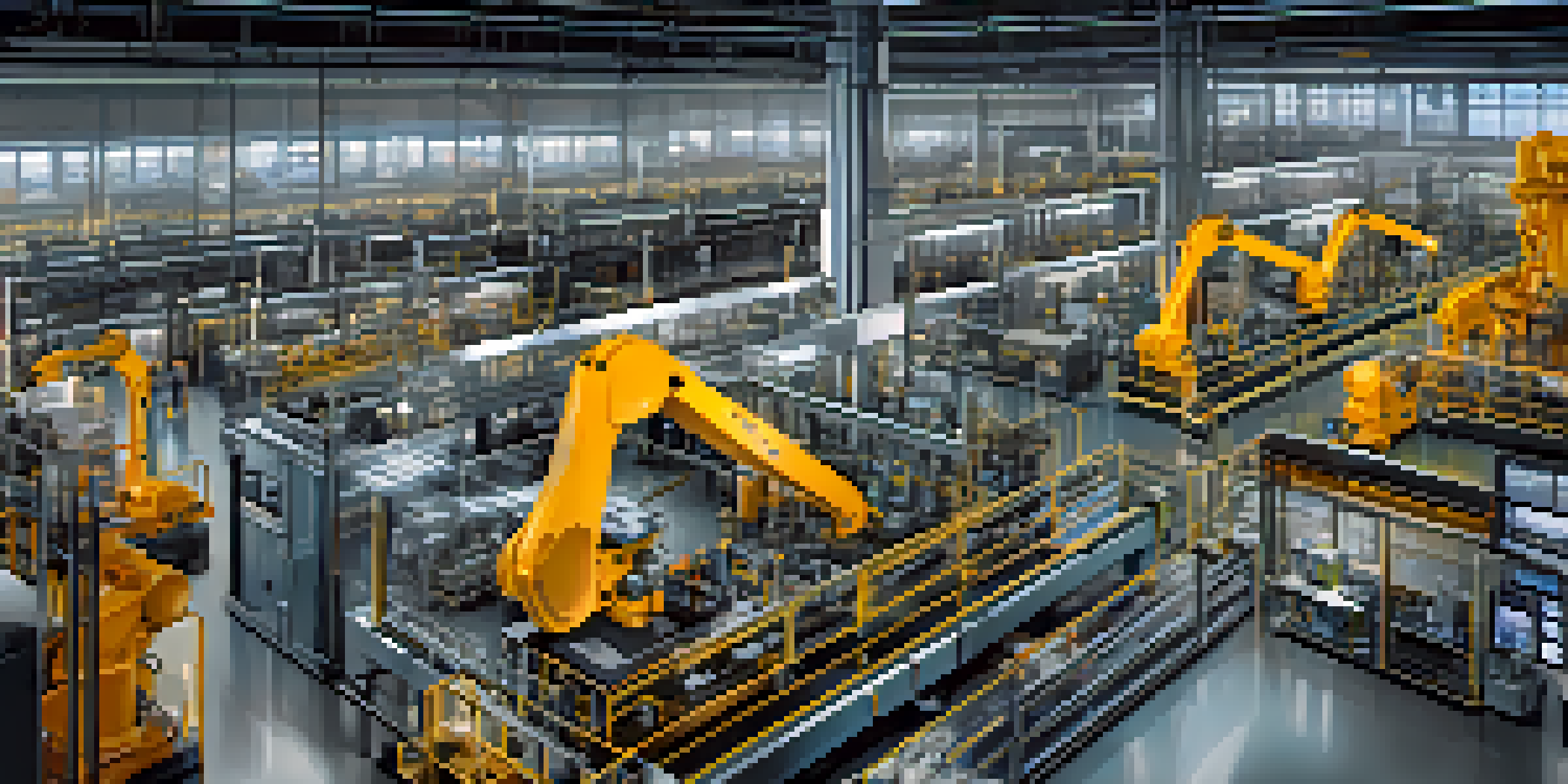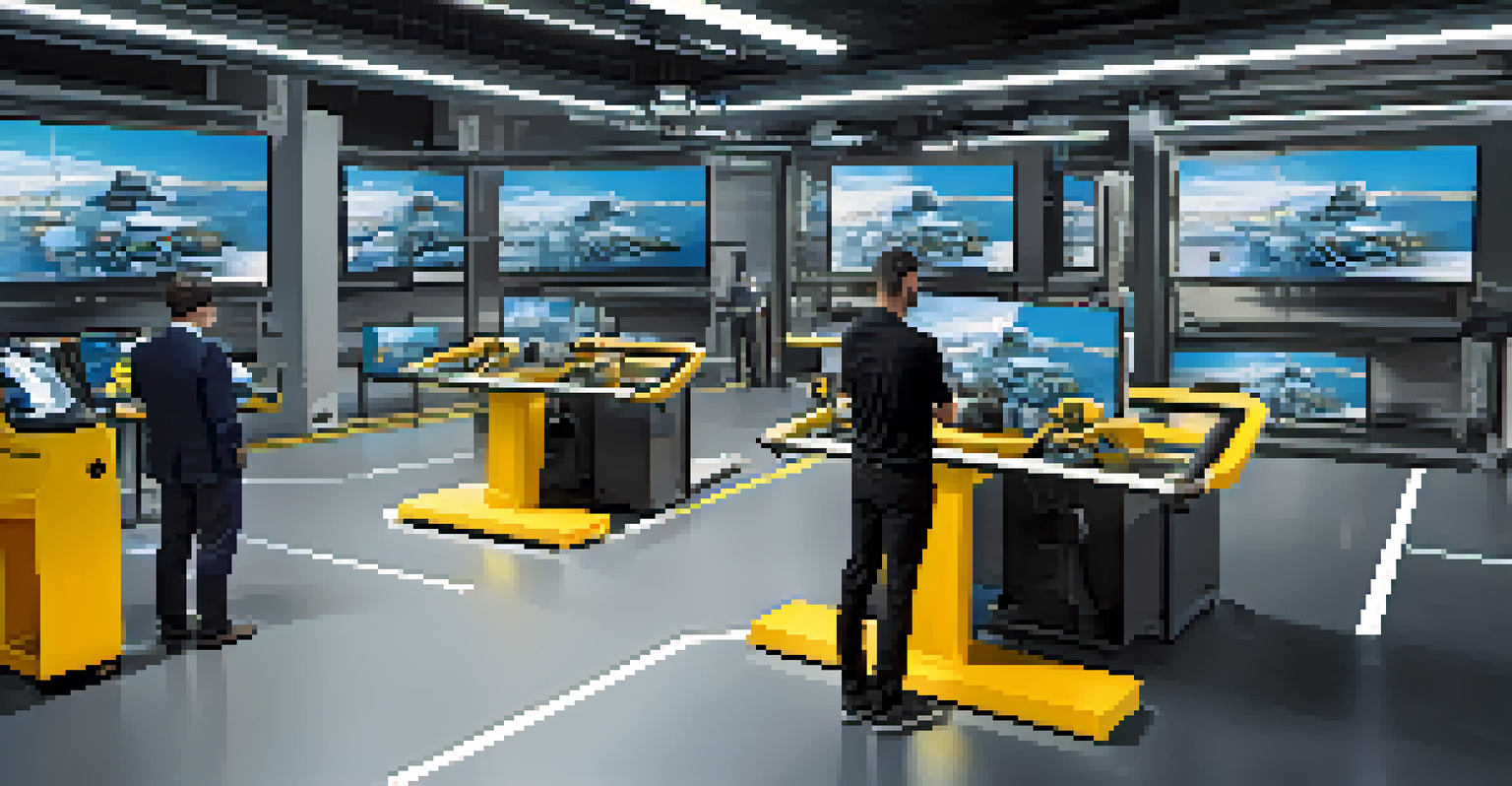How Digital Twin Technology Enhances Manufacturing Processes

Understanding Digital Twin Technology in Manufacturing
Digital twin technology refers to a virtual replica of a physical object or system. In the manufacturing sector, this means creating a digital model of a production process, machine, or even an entire factory. By simulating real-world conditions, manufacturers can monitor performance and anticipate issues before they affect production.
The greatest danger in times of turbulence is not the turbulence itself, but to act with yesterday's logic.
Think of a digital twin like a virtual test run for your favorite recipe. Before you bake, you can visualize how each ingredient interacts, making adjustments to achieve the perfect cake. Similarly, digital twins allow engineers to foresee potential problems and optimize processes without the risks associated with physical trials.
This innovative approach not only enhances understanding of the manufacturing environment but also fosters a proactive mindset. Instead of reacting to failures, businesses can identify opportunities for improvement, leading to a more efficient and productive operation.
Boosting Efficiency with Real-Time Data Insights
One of the standout features of digital twin technology is its ability to harness real-time data. Sensors placed on machinery collect information related to performance, temperature, and other vital metrics. This data feeds into the digital twin, allowing manufacturers to visualize the current state of their operations instantly.

Imagine you’re driving a car and have a dashboard that not only shows your speed but also predicts when your engine might need maintenance. This continuous feedback loop enables manufacturers to adjust processes on-the-fly, ensuring optimal performance and minimizing downtime.
Digital Twins Improve Efficiency
Digital twin technology enables manufacturers to leverage real-time data insights, enhancing operational efficiency and minimizing downtime.
By leveraging real-time insights, businesses can make informed decisions that enhance efficiency. Whether it's reallocating resources or adjusting workflows, the ability to respond immediately to data trends can significantly improve overall productivity.
Predictive Maintenance: Saving Time and Costs
One of the most significant benefits of digital twin technology is its role in predictive maintenance. Instead of relying on scheduled maintenance, which can lead to unnecessary downtime, manufacturers can use their digital twins to predict equipment failures before they occur. This proactive approach can save both time and costs.
You can't manage what you don't measure.
Think of it like changing the oil in your car based on mileage versus checking the engine regularly and addressing issues as they arise. By catching potential problems early, manufacturers can avoid the costly consequences of unexpected breakdowns and maintain a smooth production flow.
This shift not only reduces maintenance costs but also extends the lifespan of machinery. With a digital twin keeping a close eye on performance metrics, manufacturers can optimize maintenance schedules based on actual need rather than guesswork.
Enhancing Product Design and Development
Digital twin technology plays a crucial role in product design and development. By creating a virtual model of a product, designers can simulate how it will perform under various conditions before it goes into production. This leads to better-informed decisions and ultimately results in higher quality products.
Imagine testing a new smartphone design in a virtual environment where you can mimic drops, water exposure, and other stressors. This allows designers to tweak and refine the product without the costs associated with physical prototypes. The result is a faster development cycle and a more robust final product.
Predictive Maintenance Saves Costs
By predicting equipment failures, digital twins help manufacturers reduce maintenance costs and avoid unexpected breakdowns.
Furthermore, digital twins can be updated as new data becomes available, ensuring that the product evolves alongside customer needs and market trends. This adaptability is key in the fast-paced manufacturing landscape where consumer preferences can change rapidly.
Streamlining Supply Chain Management
Digital twin technology also extends its benefits to supply chain management. By creating a digital model of the entire supply chain, businesses can gain visibility into every step of the process. This transparency allows manufacturers to identify bottlenecks and streamline operations effectively.
Consider the supply chain as a relay race where each runner’s performance affects the next. A digital twin enables manufacturers to see not only their own performance but also how suppliers and distributors are contributing to the overall efficiency. With this insight, adjustments can be made to keep the race running smoothly.
This holistic view ensures that manufacturers can respond quickly to disruptions, whether they are caused by supplier delays or shifts in consumer demand. By optimizing the supply chain, businesses can improve delivery times and customer satisfaction.
Facilitating Employee Training and Skill Development
Digital twin technology can significantly enhance employee training and skill development. By using these virtual models, companies can create immersive training experiences that help workers familiarize themselves with machinery and processes in a risk-free environment. This hands-on approach can lead to better retention of knowledge and skills.
Imagine a flight simulator used by pilots to practice emergency procedures without the risks of being in the air. Similarly, digital twins allow employees to learn and practice on virtual replicas of their workplace, preparing them for real-world scenarios without the pressure of immediate consequences.
Sustainability Through Digital Twins
Digital twin technology aids manufacturers in identifying waste and promoting eco-friendly practices, ultimately benefiting both the environment and their bottom line.
As a result, this technology not only boosts worker confidence but also ensures that employees are better equipped to handle challenges. A well-trained workforce is essential for maximizing productivity and maintaining safety standards in the manufacturing sector.
Driving Sustainability in Manufacturing Practices
Sustainability is becoming increasingly important in manufacturing, and digital twin technology can play a vital role in promoting eco-friendly practices. By simulating production processes, manufacturers can identify areas where waste occurs and explore ways to reduce their environmental impact.
Think of it like a fitness tracker that helps you monitor your daily habits and encourages healthier choices. Digital twins help manufacturers see where resources are being wasted and suggest adjustments that lead to more sustainable practices. This not only benefits the environment but can also result in cost savings.

As consumers become more environmentally conscious, adopting sustainable practices can enhance a brand's reputation. Digital twin technology enables manufacturers to demonstrate their commitment to sustainability while optimizing their operations for a greener future.